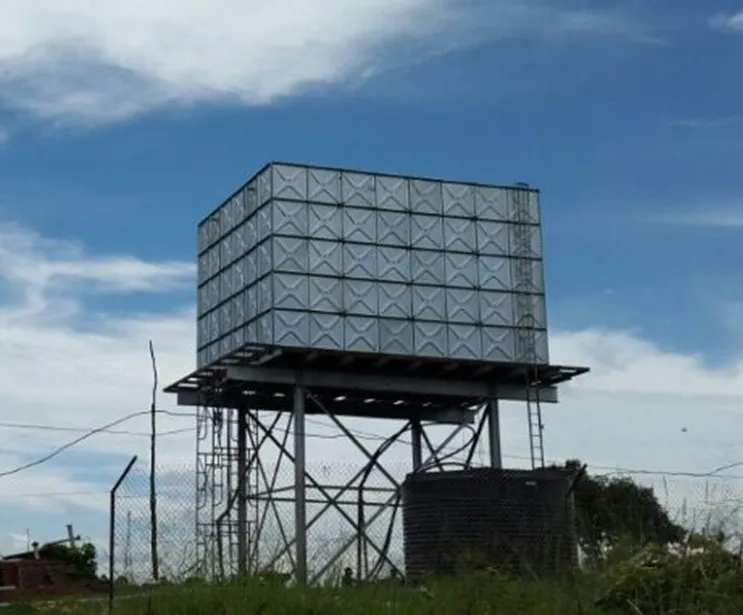loading...
- No. 9, Xingyuan South Street, Dongwaihuan Road, Zaoqiang County, Hengshui, Hebei, China
- admin@zjcomposites.com
- +86 15097380338
- Welcome to visit our website!
frp structural profiles
Exploring FRP Structural Profiles Strength, Versatility, and Sustainability
Fiber Reinforced Polymer (FRP) structural profiles are revolutionizing the construction and engineering industries. Remarkably lightweight yet incredibly strong, FRP profiles present a compelling alternative to traditional materials like steel and concrete. As the demand for innovative, sustainable materials increases in various sectors, understanding the characteristics and applications of FRP profiles is essential for engineers, architects, and construction professionals.
What are FRP Structural Profiles?
FRP structural profiles are made from a combination of a polymer matrix reinforced with fibers, typically glass, carbon, or aramid. These materials are combined to enhance the physical properties of the polymer, resulting in a composite that displays exceptional strength-to-weight ratios, corrosion resistance, and durability. The manufacturing process often involves the use of advanced techniques such as pultrusion, where fibers are pulled through a resin bath and then cured, creating continuous lengths of profile with consistent performance attributes.
Benefits of FRP Profiles
1. Lightweight and High Strength One of the most significant advantages of FRP profiles is their lightweight nature, which can be up to 80% lighter than steel. This reduction in weight simplifies transportation and installation. Despite their lightweight characteristics, FRP profiles provide high tensile and compressive strength, making them suitable for load-bearing applications.
2. Corrosion Resistance Unlike metals, FRP profiles are impervious to corrosion from environmental factors, chemicals, and moisture. This property is particularly advantageous in applications involving water, sewage, and chemical industries, where traditional materials often fail over time. FRP profiles can significantly extend the lifespan of structures, reducing maintenance costs and downtime.
3. Design Flexibility The versatility of FRP materials allows for a wide range of shapes, sizes, and configurations. This flexibility enables architects and engineers to create intricate designs without compromising structural integrity. FRP can be molded into various shapes, facilitating bespoke solutions tailored to specific project requirements.
4. Thermal Insulation FRP profiles have low thermal conductivity, which provides excellent thermal insulation properties. This feature is beneficial in reducing energy consumption in building applications and contributes to more comfortable living and working environments.
5. Sustainability As sustainable construction practices gain momentum, FRP materials offer an eco-friendly alternative to traditional building materials. Many FRP composites are manufactured using recycled materials, and their long service life minimizes resource depletion. Furthermore, the lightweight nature of FRP can lead to lower transportation emissions.
frp structural profiles

Applications of FRP Profiles
FRP structural profiles are increasingly being utilized across various sectors, demonstrating their adaptability and performance. Some key applications include
- Infrastructure FRP profiles are extensively used in bridges, walkways, and public transportation facilities. Their corrosion resistance is particularly advantageous in marine environments, extending the lifespan of infrastructure projects. - Industrial In sectors such as oil, gas, and chemical processing, FRP profiles provide reliable solutions in corrosive environments. They are used in support structures, pipelines, and storage tanks.
- Architecture The aesthetic versatility of FRP allows architects to design visually striking structures without compromising strength. The material can be employed in facades, canopies, and decorative elements, providing both functional support and visual appeal.
- Transportation In the automotive and aerospace industries, FRP components are utilized to reduce weight and improve fuel efficiency without sacrificing safety or performance.
Challenges and Considerations
Despite their numerous advantages, the adoption of FRP profiles is not without challenges. The initial cost of FRP materials can be higher than traditional materials, which may deter some project managers. Additionally, the production processes for FRP can require specialized equipment and expertise. Lastly, while FRP offers several benefits in terms of weight and corrosion resistance, it is essential to evaluate the material’s fire resistance, especially in building applications.
Conclusion
FRP structural profiles represent a significant advancement in material science, offering numerous benefits for modern construction and engineering applications. As industries increasingly focus on sustainability, performance, and design flexibility, FRP profiles will likely see expanded usage. By understanding the advantages and potential challenges associated with FRP, professionals can make informed decisions that enhance the safety, efficiency, and environmental impact of their projects.
-
GRP Structures: The Future of Lightweight, High-Performance EngineeringNewsJun.20,2025
-
FRP Water Tank: High-Performance Storage for Corrosive and Clean Water SystemsNewsJun.20,2025
-
FRP Square Tube: The New Industry Standard for Chemical and Structural ApplicationsNewsJun.20,2025
-
FRP Pultruded Profiles: The Ultimate Choice for Lightweight Structural StrengthNewsJun.20,2025
-
FRP Handrails: The Safer, Smarter, and Stronger Choice for Modern InfrastructureNewsJun.20,2025
-
FRP Grating: The Smart Solution for Durable, Lightweight Industrial FlooringNewsJun.20,2025
-
Why Choose a Galvanized Water Tank for Your Storage NeedsNewsMay.21,2025
